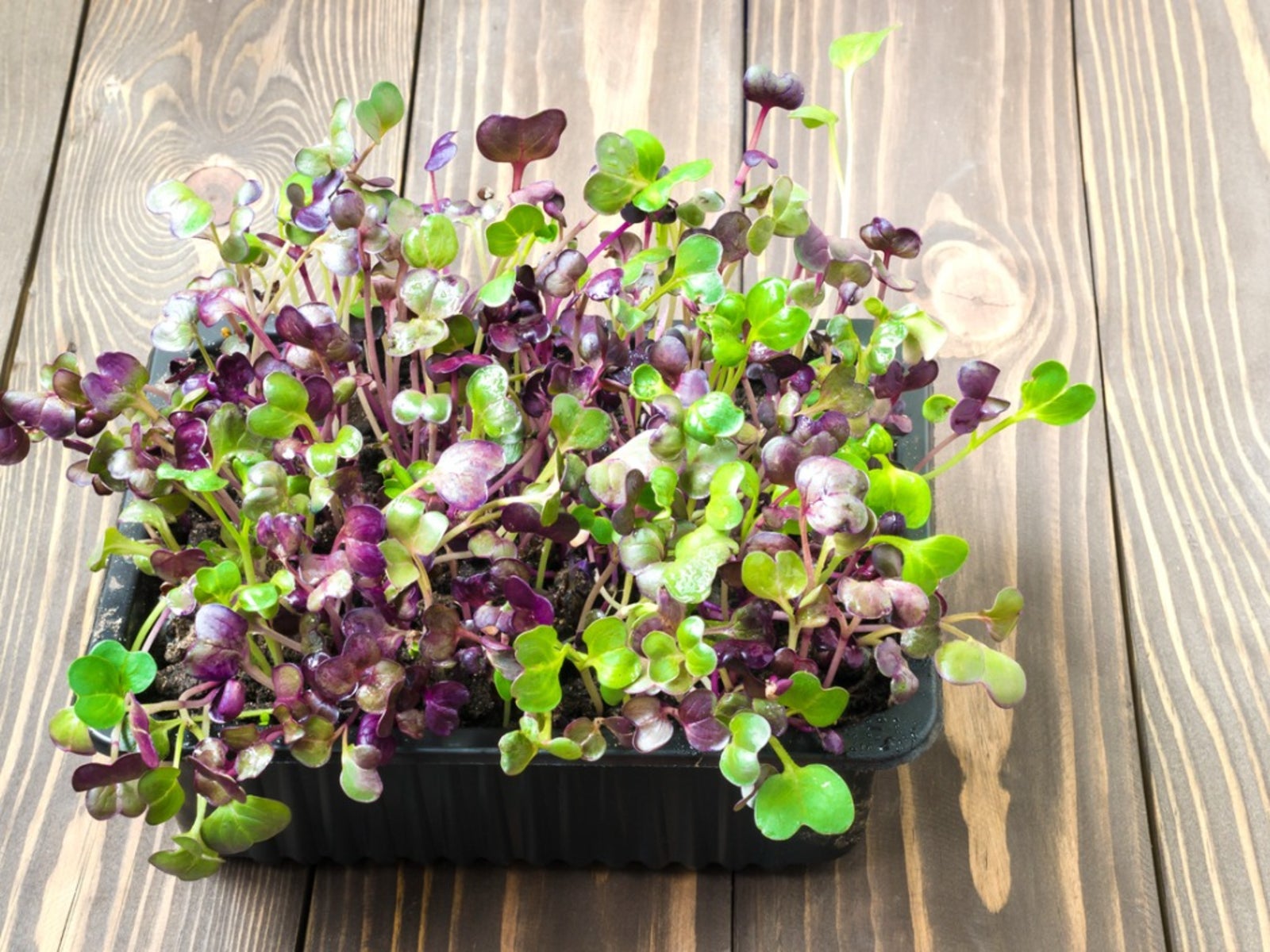Growing Microgreens: Planting Lettuce Microgreens In Your Garden


Healthy living and eating requires three to five servings of vegetables per day. Variety in your diet is one easy way to achieve that goal and the addition of different foods prevents boredom. Microgreens are an interesting and tasty way to introduce more veggies. What are microgreens? They are the latest hip vegetable to grace five-star restaurants and high-end produce markets. The good news is they are easy to grow indoors.
What are Microgreens?
Microgreens are the sprouted seeds of various lettuces and greens. The seeds are grown in small, shallow containers like seed flats that make it easier to harvest. In addition to lettuce microgreens, you can sprout cruciforms, beets, radishes, celery, basil, and dill. Microgreen production is expensive and time consuming in large scale operations but at home, growing microgreens is very simple.
Sprouting Microgreens
Many gardeners prefer to sprout the seeds before they plant them. If you wish to do so, you can wrap your seeds in a moist paper towel in a closed plastic bag until they sprout and then sow them. However, it could be difficult to plant the sprouted seed without breaking off the tender new growth. The plants grow so quickly that sprouting microgreens isn't really necessary.
How to Grow Microgreens
Growing microgreens requires soil, a container, heat, water, and seeds. Learning how to grow microgreens is a great project for children. For the container, choose a low, almost flat tray, preferably with drainage. The soil used should be a potting mix with a little extra perlite mixed into the medium. Lettuce microgreens can be sown on the surface of the soil or lightly covered with a sifting of fine soil. Heavier seeds need complete soil contact and should be sown ¼ to 1/8 inch (3-6 mm.) deep. Microgreens don't need fertilizer but they do need to be kept moist. A water mister is useful for dampening the soil and you can place a lid or plastic wrap over the container until the seeds sprout. Place the container where temperatures are at least 60 degrees F. (16 C.) for germination. Lettuce microgreens and some other greens can be grown in slightly cooler temperatures. Give the microgreens plenty of bright indirect light.
Harvesting Microgreens
Use a pair of kitchen shears to cut off the tiny plants as you need them. They're ready for harvest when they reach the true leaf stage-- generally at about 2 inches (5 cm.) tall. The microgreens don't keep long and are prone to wilting. They should be washed thoroughly to ensure that no pathogen or contamination is present.
Gardening tips, videos, info and more delivered right to your inbox!
Sign up for the Gardening Know How newsletter today and receive a free copy of our e-book "How to Grow Delicious Tomatoes".

Bonnie Grant is a professional landscaper with a Certification in Urban Gardening. She has been gardening and writing for 15 years. A former professional chef, she has a passion for edible landscaping.
-
 Types Of Tomatoes Explained: Explore The Many Wonderful Shapes, Colors, Flavors, & Best Uses
Types Of Tomatoes Explained: Explore The Many Wonderful Shapes, Colors, Flavors, & Best UsesThe world of tomato varieties is vast and fascinating. Learn about the key types to grow in your garden, tailored to your preferences and space.
By Amy Grant
-
 Try The Trend – Turn Any Bed Into A Keyhole Garden With This Clever In-Ground Composter
Try The Trend – Turn Any Bed Into A Keyhole Garden With This Clever In-Ground ComposterKeyhole gardening is an efficient and sustainable practice that saves space. Get started on this DIY project quickly and easily with an in-ground composter.
By Bonnie L. Grant